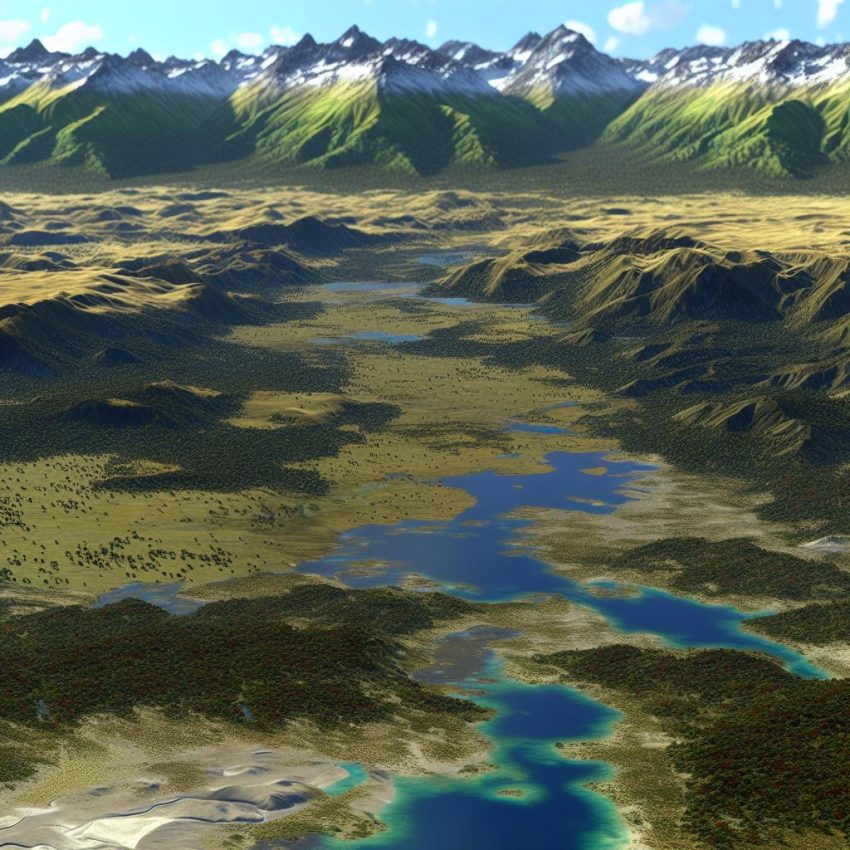Overview
San Guillermo National Park is situated in the Andes Mountains, specifically within the borders of Argentina’s San Juan Province. As a key protected area, this national park was officially designated in 1998, safeguarding approximately 165,000 hectares of unique high-altitude terrain. The main purpose of the park’s establishment is the preservation of its distinctive ecosystem, which is a testament to nature’s resilience and adaptability. This vast expanse of land continues to be a crucial habitat for both flora and fauna, making it a vital part of the country’s natural heritage.
Geography and Climate
San Guillermo National Park’s geographical setting is both alluring and formidable. Positioned in the northwest corner of San Juan Province, the park showcases an array of rugged landscapes and varied altitudes that range from 2,100 to 6,000 meters above sea level. Such dramatic elevation differences contribute to the park’s defining features. The climate here is chiefly arid, marked by cold temperatures juxtaposed with scant rainfall. This environment is challenging, but it serves as a nurturing ground for a plethora of flora and fauna, each uniquely adapted to survive and thrive under these specific conditions.
Geographical Features
The park’s geographical splendor is characterized by a composite of mountains, valleys, and other striking formations that have been sculpted over millions of years. Its high-altitude environment creates distinct ecological zones, each supporting different life forms. Such diversity in topography is not just visually captivating but also ecologically significant.
Climate Impact
The climate’s influence on the park’s ecosystem is profound. The minimal rainfall and cold temperatures mean that every organism within this ecosystem must adapt to limited water resources and extreme weather conditions. The resilience observed in the plant and animal species is an area of interest for many researchers looking to understand adaptive processes in high-altitude arid environments.
Flora and Fauna
The diversity of life in San Guillermo National Park is truly awe-inspiring. Even within its challenging climate, the park supports an array of plant and animal species. The flora is adapted to withstand the harsh climate, consisting mainly of grasses, shrubs, and resilient plant varieties. Among the various species populating the area are the *Austrocedrus chilensis* and high-altitude cacti. These plants are vital for maintaining the ecosystem’s equilibrium, offering sustenance and shelter to numerous animal species.
Animal Life
The fauna is equally impressive and diverse. The park provides refuge for several native species, such as the *vicuña*, *guanaco*, and the majestic Andean condor. It is also an essential sanctuary for the endangered Andean cat, making conservation efforts particularly critical. These animals have developed unique adaptations, enabling them to survive in minimalistic and often harsh conditions.
Conservation Significance
The significance of the park’s wildlife extends beyond its borders, contributing to global biodiversity. Conservationists work tirelessly within San Guillermo to mitigate environmental threats like habitat loss, climate change, and human encroachment, ensuring that endangered species receive the protection they need.
Conservation Efforts
The inception of San Guillermo National Park signaled Argentina’s commitment to preserving its unique ecosystems and endemic species. As an integral component of the UNESCO Biosphere Reserve, the park benefits from enhanced conservation measures aimed at protecting its natural habitats. Keys to these efforts include sustainable tourism practices and scientific research initiatives.
Sustainability Practices
Sustainable tourism is central to the park’s conservation strategy. By regulating visitor access and activities, the park minimizes human impact on delicate ecosystems. Educational programs raise awareness about the park’s ecological importance, fostering a culture of conservation among visitors and local communities.
Research and Monitoring
Scientific research is instrumental in shaping conservation strategies. The park serves as a living laboratory where researchers study ecological interactions, species behavior, and the impacts of climate change. Ongoing monitoring helps in adapting conservation plans to changing conditions, ensuring that interventions are both effective and timely.
Visitor Information
Despite its remoteness, visiting San Guillermo National Park is an enriching experience that warrants careful planning. Most visitors begin their journey in the nearby town of Rodeo, which acts as the primary access point to the park. Because of its environmental fragility, visitor numbers and activities are regulated to preserve the park’s ecological integrity.
Visitor Activities
The park offers a range of activities designed to enhance visitor experience while respecting environmental constraints. Guided tours provide educational insights, hiking trails allow for immersive nature experiences, and wildlife observation opportunities abound. Adhering to park regulations is essential for all visitors, as responsible behavior is crucial for conservation efforts.
Conclusion
San Guillermo National Park is a formidable guardian of Argentina’s high-altitude ecosystems. Through dedicated conservation efforts, it not only safeguards the diverse species that call it home but also offers future generations the promise of nature’s wonders remaining intact. Whether for the pursuit of scientific knowledge or the sheer joy of exploring unspoiled landscapes, San Guillermo presents an unparalleled glimpse into the unique natural world of the Andes.

